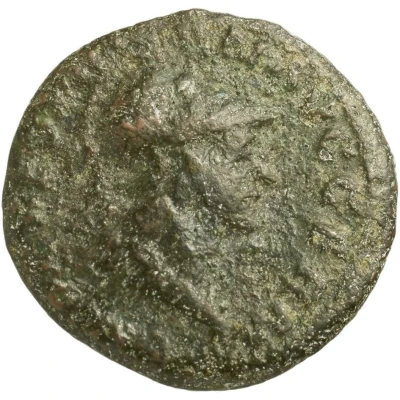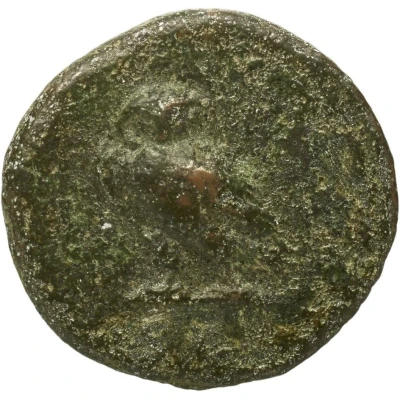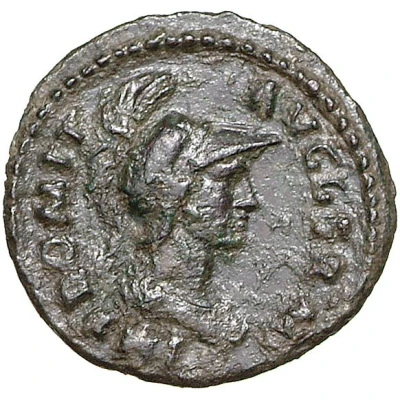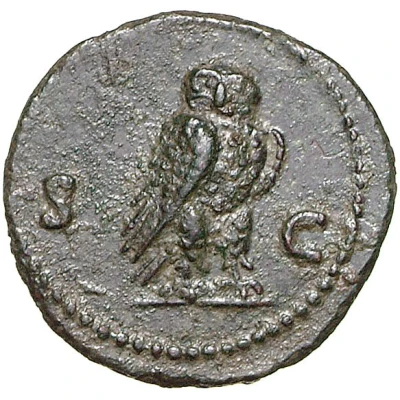


© Bibliothèque nationale de France / Gallica
Quadrans S C; Minerva
| Bronze | 2.7 g | 18 mm |
| Issuer | Rome › Roman Empire (27 BC - 395 AD) |
|---|---|
| Emperor | Domitian (Titus Flavius Domitianus) (81-96) |
| Type | Standard circulation coin |
| Years | 84-85 |
| Value | 1 Quadrans = ¼ As = 1⁄64 Denarius |
| Currency | Denarius, Reform of Augustus (27 BC – AD 215) |
| Composition | Bronze |
| Weight | 2.7 g |
| Diameter | 18 mm |
| Shape | Round (irregular) |
| Technique | Hammered |
| Demonetized | Yes |
| Updated | 2024-10-06 |
| Numista | N#251668 |
|---|---|
| Rarity index | 100% |
Reverse
Owl standing left on branch, looking front.
Script: Latin
Lettering: S C
Translation:
Senatus Consultum.
Decree of the senate.
Comment
Mass varies: 2.373–3 g;Diameter varies: 17.46–19 mm;
Source: Online Coins of the Roman Empire (OCRE)
Interesting fact
The Quadrans coin was used during the Roman Empire and was equivalent to one-fourth of a denarius, which was the standard unit of currency at the time. The Quadrans coin features an image of the goddess Minerva on one side and an image of a fasces, a bundle of rods bound together, on the other. The fasces symbolized the power and authority of the Roman state. It's interesting to note that the Quadrans coin was made of bronze, which was a common material for coins during that time period. The use of bronze for coins was practical because it was durable, abundant, and relatively inexpensive compared to other metals. The Quadrans coin weighed 2.7 grams, which was a relatively small weight compared to other coins used during the Roman Empire. Overall, the Quadrans coin is an interesting piece of history that provides insight into the economic and political systems of the Roman Empire during that time period.

